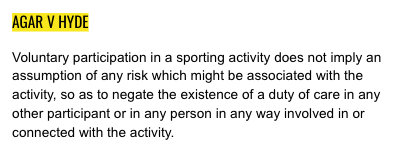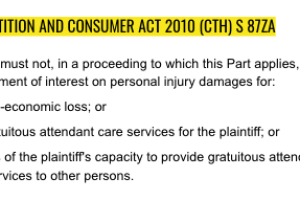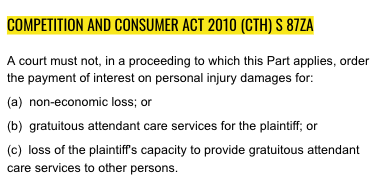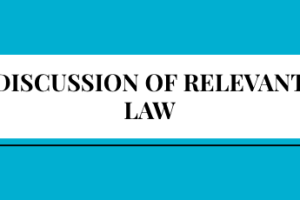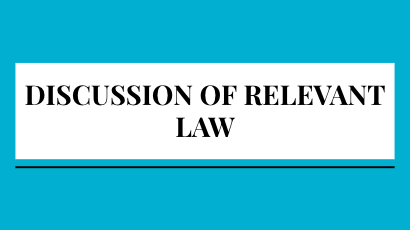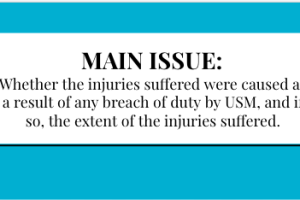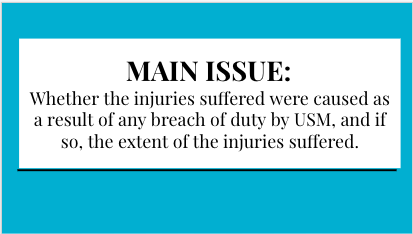Plaintiff Seeks Damages for Injuries From Duathlon

James v USM Events Pty Ltd [2022] QSC 63 (14 June 2022)
The plaintiff claims damages for physiological and psychological injuries suffered while competing in a duathlon organised by the defendant. The parties were in dispute over the scope of the duty owed by the defendant which was extended to the plaintiff. The Court, in resolving this dispute, relied upon Civil Liability Act 2003 (Qld).

Facts:
The applicant, Dr. Sally James (“Dr. James”) competed in a number of triathlons including the Gold Coast Triathlon – Luke Harrop Memorial (“GCT”) in 2017. In February 2018, she competed in the GCT held at Mitchell Park, Broadwater Parklands at Southport. Due to water conditions, the event was changed to a duathlon the day before the race.
It, therefore, only involved a run leg, a cycling leg, and a further run leg. Dr. James was disappointed as swimming was her strongest sport. However, given she had already travelled to the Gold Coast she decided to compete on 25 February 2018.
While undertaking the return leg of the first run leg, she was running into the Broadwater car park area with a number of people. She heard yelling and swearing that startled her. She was knocked over by a para-athlete in a racing wheelchair, Mr. Bill Chaffey.
She remembered Mr. Chaffey, ricocheting out of his wheelchair and hitting the ground but little else which resulted in a brain and psychiatric injury as well as some other relatively minor injuries. The defendant, USM Events Pty Ltd (“USM”), was the organiser and operator of the event.
Dr. James sues USM claiming damages for negligence and as a result of a breach of Section 60 of the Australian Consumer Law (“ACL”), which is pleaded as an implied term of the contract. USM accepts that it owed a duty of care to avoid the foreseeable risk of injury to Dr. James in relation to the event but disputes the extent of the duty of care pleaded by Dr. James and that it breached any duty of care.
USM has raised a number of defences based on obvious and inherent risk and that Dr. James had voluntarily assumed the relevant risk by entering the competition. It is also alleged Dr. James’ damages should be reduced for contributory negligence. There is also a significant dispute as to what, if any, injuries were suffered by Dr. James as a result of the collision with Mr. Chaffey on that day and the effect that that has had on her ability to work.

Issue:
Whether the injuries suffered were caused as a result of any breach of duty by USM, and if so, the extent of the injuries suffered.

Applicable law:
Australian Constitution s 109 - provides that ACL is a Commonwealth law which will prevail over any state law to the extent of any inconsistency.

Competition and Consumer Act 2010 (Cth) s 87ZA - provides that a court must not, in a proceeding to which this Part applies, order the payment of interest on personal injury damages for:
(a) non-economic loss; or
(b) gratuitous attendant care services for the plaintiff; or
(c) loss of the plaintiff's capacity to provide gratuitous attendant care services to other persons.

Civil Liability Act 2003 (Qld) s 13 - provides that an "obvious risk" to a person who suffers harm is a risk that, in the circumstances, would have been obvious to a reasonable person in the position of that person.
National Disability Insurance Scheme Act 2013 (Cth) s 104 - pursuant to which the CEO by written notice may require the participant or prospective participant to take action specified to claim or obtain compensation.

Agar v Hyde [2001] HCA 41; (2000) 201 CLR 552 - provides that voluntary participation in a sporting activity does not imply an assumption of any risk which might be associated with the activity, so as to negate the existence of a duty of care in any other participant or in any person in any way involved in or connected with the activity.
Collins v Clarence Valley Council [2015] NSWCA 263; (2015) 91 NSWLR 128 - where McColl JA (with whom Macfarlan and Emmett JJA agreed) considered that there was much to be said that the risk in question is the same as that identified for duty of care purposes, given if the defence is established, the defendant will not be found to have owed the plaintiff a duty of care.
Cook’s Construction Pty Ltd v SFS 007.298.633 Pty Ltd (formerly t/as Stork Food Systems Australasia Pty Ltd) [2009] QCA 75; (2009) 254 ALR 661 - provides that a party’s case is defined by its pleading and the parameters of the contest as they were defined by the parties’ conduct of the trial.
Felhaber v Rockhampton City Council [2011] QSC 023 - provides that the statement that a risk is foreseeable does not suggest anything about the probability or improbability of its occurrence.
Let’s Go Adventures v Barrett [2017] NSWCA 243 - Adamson J (with whom Basten JA and Gleeson JA agreed) considered the statutory cause of action was conferred by s 60 when read with s 267 of the ACL.
Meandarra Aerial Spraying Pty Ltd v GEJ & MA Geldard Pty Ltd [2012] QCA 315; [2013] 1 Qd R 319 - provides that the statutory formulation has been acknowledged as bringing about a slight increase in the degree of probability of harm which is required for a finding that the risk is foreseeable.
Menz v Wagga Wagga Show Society Inc [2020] NSWCA 65; (2020) 103 NSWLR 103 - Leeming J rhetorically stated how the risk of harm was to be identified when it was not identified at all in the pleadings.
Nucifora & Anor v AAI Limited [2013] QSC 338 - provides that a plaintiff must demonstrate that his or her earning capacity has been diminished by the accident-caused injury and that that diminution or may be productive of financial loss.
Perisher Blue Pty Ltd v Nair Smith [2015] NSWCA 90; (2015) 90 NSWLR 1 - provides that the level of particularity in defining the risk of harm is often not an easy process and may be necessary in order to determine what reasonable precautions ought to have been taken in order to avoid the risk.
PWJ1 v The State of New South Wales [2020] NSWSC 1235 - provides that if it is an obvious risk, the person is taken to have become aware of the risk unless the plaintiff proves, on the balance of probabilities, that he or she was not aware of the risk.
Rickhuss v Cosmetic Institute Pty Ltd (No 2) [2020] NSWSC 393 - considered that a pleading by which damages were claimed under, inter alia, s 236 of the ACL and rather relief could only be claimed under s 267 of the ACL.
Roads v Traffic Authority of NSW v Dederer (2007) 234 CLR 330 - provides that it is necessary to correctly identify the risk so one can assess whether it is foreseeable, and if so, what a reasonable response to that risk would be, either at common law.
Rootes v Shelton [1967] HCA 39; (1967) 116 CLR 383 - relied upon in holding that the mere fact that Mr Chaffey may have acted in breach of the rules in relation to the incident does not lead to a conclusion that USM has failed to take reasonable care.
Singh v Lynch [2020] NSWCA 152; (2020) 103 NSWLR 568 - provides that the risk is to be described with a level of generality, but sufficiently precise to capture the harm which resulted from the materialisation of the facts of the particular case.
Sutherland Shire Council v Heyman [1985] HCA 41; (1985) 157 CLR 424 - provides that in considering whether there is a breach of a duty of care it must be borne in mind that the common law recognises “a duty to take reasonable care to avoid doing what might cause injury to another, not a duty to act to prevent injury being done to another by that other, by a third person, or by circumstances for which nobody is responsible.”
Tapp v Australian Bushmen’s Campdraft & Rodeo Association Ltd [2020] NSWSCA 263 - provides that pursuant to s 60 of the Australian Consumer Law it was a term of the agreement between the defendant and the plaintiff that the campdrafting event would be organised, managed and provided with due care and skill.
The Thistle Company of Australia Pty Ltd v Bretz & Anor [2018] QCA 6 - provides that Philippides JA (with whom Gotterson JA and Bond J agreed) considered the question of whether a concrete plinth painted black on which a petrol bowser was positioned, which an elderly man tripped over was an obvious risk.
Trevali Pty Ltd (trading as Campbelltown Roller Rink) v Haddad (1989) Aust Torts Reports 80-286 - provides that when a defendant creates a situation of danger, it may or may not owe a duty of care to those who choose to enter into it.
Uniting Church in Australia Property Trust (NSW) v Miller [2015] NSWCA 320; (2015) 91 NSWLR 752 - provides that the risk is not to be confined to the precise set of circumstances which are alleged to have occurred, although it must encompass those circumstances.
Vairy v Wyong Shire Council [2005] HCA 62; (2005) 223 CLR 422 - provides that reasonable care does not require the complete elimination of risks.
Wade v J Daniels Associates Pty Ltd [2020] FCA 1708 - held that the reference to “due care and skill” is a common law negligence standard.
Wilson v Nilepac Pty Ltd (t/as Vision Personal Training) Crows Nest [2011] NSWCA 63 - provides that reasonable precautions may not need to be taken in order to ensure events can be carried out safely.
Whisprun Pty Ltd (formerly Northwest exports Pty Ltd) v Dixon [2003] HCA 48; (2003) 200 ALR 447 - provides that rules which govern participation in sport are not necessarily conclusive of the content of the duty of care owed but are factors to be taken into account in assessing what was required by the standard of reasonableness.
Wyong Shire Council v Shirt [1980] HCA 12; (1980) 146 CLR 40 - provides that in deciding whether there has been a breach of the duty of care the tribunal of fact must first ask itself whether a reasonable man in the defendant’s position would have foreseen that his conduct involved a risk of injury to the plaintiff or to a class of persons including the plaintiff. If the answer is in the affirmative, it is then for the tribunal of fact to determine what a reasonable man would do by way of response to the risk.
Analysis:
Dr. James had the benefit of an NDIS package, and the evidence supports the fact that services have been provided. The application completed by Dr. Cash suggests it was sought based on the injuries suffered in the accident, but it is apparent there were medical reports provided that were not the subject of evidence in this court.
The Court has found that Dr. James has suffered a minor brain injury and PTSD as a result of the incident, which is referred to in the supporting evidence form. However, there is no evidence of the link between Dr. James’ conditions and the services provided.
USM was aware of the speed that para-athletes in wheelchairs could reach. They were at least aware of Mr. Chaffey as a hard competitor who competed at the elite level and travelled fast.
Consistent with its experience with all athletes who were competitive and seeking to achieve their best result such as Mr. Chaffey, USM would have been aware that athletes would seek to hug the race line, including at the s-bend, and seek to overtake athletes in front of them. They further knew or ought to have known that athletes were likely to be more bunched up at narrower parts of the course such as the S Bend which would increase the risk of contact between para-athletes in wheelchairs and able-bodied athletes.
A reasonable person in the position of USM, knowing of the matters identified above and given the knowledge of USM, would have considered that the risk of harm was reasonably foreseeable and not insignificant. While Dr. James was startled and stepped to the right rather than keeping to the left when Mr. Chaffey called out contrary to the protocols, given it was a sudden response to Mr. Chaffey’s calling out where he was coming behind her at speed, it was a reaction which the Court does not find that a reasonable person in her position would have acted differently or had time to reasonably look behind to make a judgment as to how she should respond.
Conclusion:


